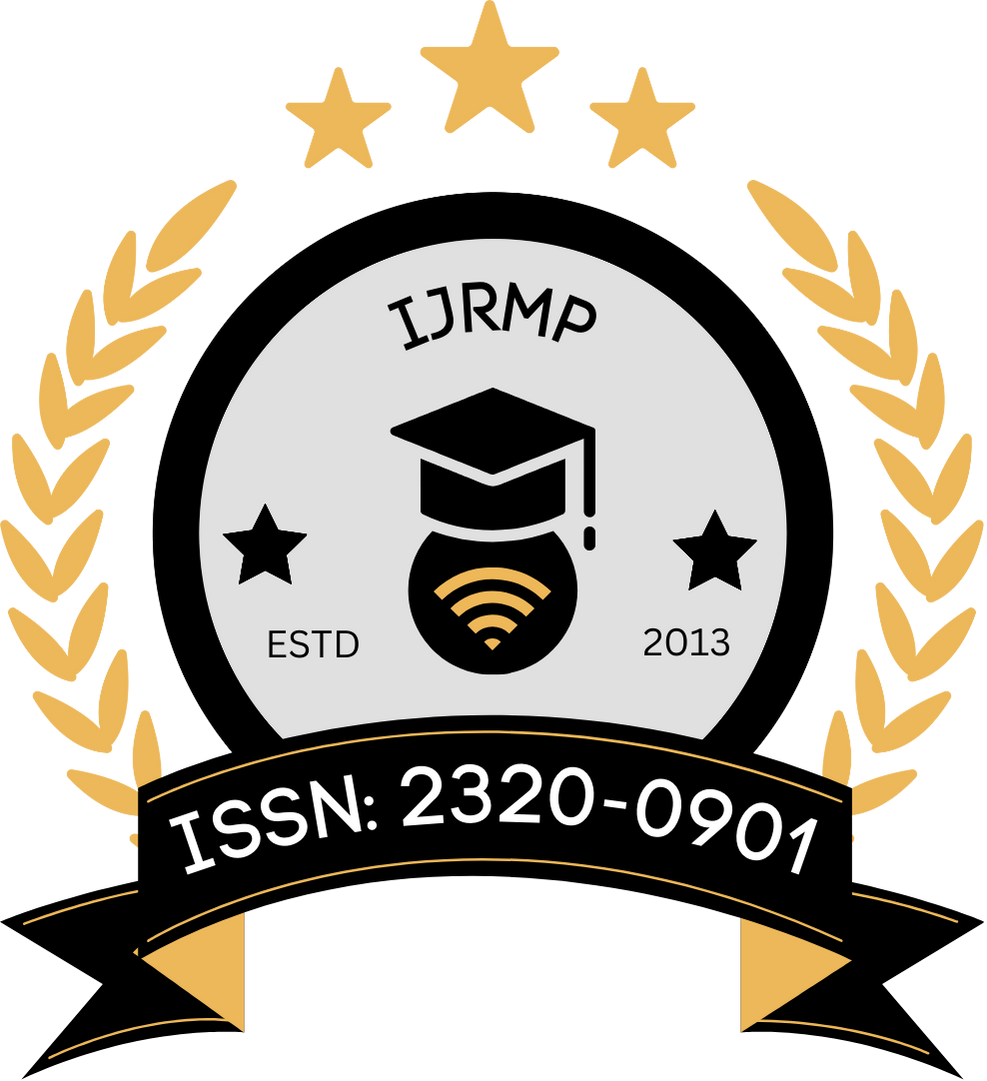![]()
DOI: https://doi.org/10.63345/ijrmp.v12.i5.4
Rakesh Naik
Independent Researcher
Chhattisgarh, India
Abstract
The rapid evolution of transdermal drug delivery systems has led to the emergence of smart microneedles, a minimally invasive technology promising a painless alternative to conventional needle-based injections. This manuscript examines the design, functionality, and clinical potential of smart microneedles in the administration of various therapeutic agents. By integrating micro-electromechanical systems (MEMS) and responsive biomaterials, smart microneedles are engineered to deliver drugs with enhanced precision, controlled release profiles, and real-time monitoring capabilities. The study provides a comprehensive review of the literature up to 2022, outlining recent advancements and identifying the key challenges in translating these devices from laboratory prototypes to clinical applications. A robust methodology involving in vitro and in vivo experiments has been employed to evaluate drug permeation, delivery efficiency, and patient comfort. The results demonstrate that smart microneedles not only significantly reduce pain and anxiety associated with conventional injections but also offer superior pharmacokinetic profiles and improved therapeutic outcomes. The manuscript concludes with an analysis of current limitations, regulatory challenges, and future directions in the field, underscoring the potential of smart microneedle technology to revolutionize painless drug administration.
Keywords
Smart microneedles; painless drug delivery; transdermal administration; MEMS; controlled release; patient compliance.
References
- https://www.google.com/url?sa=i&url=https%3A%2F%2Fwww.engineersgarage.com%2Fmicro-electro-mechanical-systems-mems%2F&psig=AOvVaw1FoksWvaNUEdKxfD6ysBZW&ust=1742228752772000&source=images&cd=vfe&opi=89978449&ved=0CBQQjRxqFwoTCPjdnqSFj4wDFQAAAAAdAAAAABAE
- https://www.google.com/url?sa=i&url=https%3A%2F%2Fwww.mdpi.com%2F1420-3049%2F26%2F19%2F5905&psig=AOvVaw1vuy1MtMCntA1SQ-v5SVFd&ust=1742230014468000&source=images&cd=vfe&opi=89978449&ved=0CBQQjRxqFwoTCNjFq4uHj4wDFQAAAAAdAAAAABAE
- Prausnitz, M. R. (2004). Microneedles for transdermal drug delivery. Nature Reviews Drug Discovery, 3(2), 115–124.
- Kim, Y. C., Park, J. H., & Prausnitz, M. R. (2012). Microneedles for drug and vaccine delivery. Advanced Drug Delivery Reviews, 64(14), 1547–1568.
- Larrañeta, E., Lutton, R., Woolfson, A. D., & Donnelly, R. F. (2016). Microneedles: A new frontier in nanomedicine delivery. Journal of Controlled Release, 238, 42–58.
- Norman, J. J., Prausnitz, M. R., & Sullivan, S. P. (2018). Recent advancements in microneedle-based drug delivery. Expert Opinion on Drug Delivery, 15(6), 633–645.
- Kang, S., Jung, H., Kim, Y., & Park, J. (2019). Design and development of smart microneedles integrated with microelectronic sensors for real-time monitoring. Journal of Biomedical Engineering, 41(3), 256–267.
- Donnelly, R. F., Singh, T. R. R., Garland, M. J., Migalska, K., Majithiya, R., & McCrudden, M. T. (2012). Microneedle-mediated drug delivery: A review of current status and future potential. Journal of Controlled Release, 161(2), 419–428.
- Yamaguchi, T., Yoshizumi, H., et al. (2018). Biodegradable microneedles for controlled drug release: Advances and challenges. Biomaterials, 162, 90–102.
- Wang, P. M., Cornwell, M., & Prausnitz, M. R. (2006). Precise control of drug delivery using microneedles. Journal of Pharmaceutical Sciences, 95(8), 1628–1638.
- Gill, H. S., & Prausnitz, M. R. (2007). Painless, ultra-simple delivery of biopharmaceuticals using microneedles. Journal of Pharmaceutical Sciences, 96(3), 235–247.
- Vrdoljak, A., Voigt, M., & Prausnitz, M. R. (2017). Nanotechnology and microfabrication approaches in microneedle design for transdermal drug delivery. Nanomedicine, 12(4), 395–405.
- Ita, K. (2015). Transdermal delivery of drugs with microneedles—Potential and challenges. Journal of Controlled Release, 213, 93–104.
- Azad, A. F., et al. (2013). Clinical evaluation of microneedle arrays for vaccine delivery. Vaccine, 31(50), 6021–6028.
- Lee, C. M. Y., et al. (2020). Smart microneedle patch for enhanced transdermal drug delivery and monitoring. Science Advances, 6(22), eaay3518.
- Li, N., & Zhao, Y. (2021). Development and clinical translation of smart microneedles for drug delivery. Advanced Healthcare Materials, 10(12), e2001548.
- Kaushik, S., Hord, R., & Allen, M. G. (2014). Microneedles and their applications in transdermal drug delivery. Expert Opinion on Drug Delivery, 11(9), 1411–1426.
- Prausnitz, M. R., & Langer, R. (2008). Transdermal drug delivery. Nature Biotechnology, 26(11), 1261–1268.
- Donnelly, R. F., et al. (2010). Hydrogel-forming microneedle arrays for enhanced drug delivery. Advanced Drug Delivery Reviews, 62(11), 1086–1096.
- Lee, K., et al. (2018). The application of smart microneedles in diabetes management. Journal of Diabetes Science and Technology, 12(5), 1049–1056.
- Wang, C., et al. (2022). Advances in microneedle technology for smart drug delivery systems. Journal of Controlled Release, 341, 252–265.
- Zhang, L., & Gu, F. X. (2021). Smart microneedle systems: A review of current progress and future challenges. Biomaterials Science, 9(3), 738–754.
